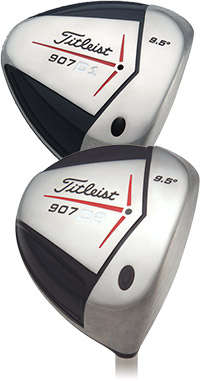.JPG)
Titleist D1 Driver - New !!!!!!!
Check my rate
| Main centres: | 1-3 business days |
| Regional areas: | 3-4 business days |
| Remote areas: | 3-5 business days |
.JPG)
| Main centres: | 1-3 business days |
| Regional areas: | 3-4 business days |
| Remote areas: | 3-5 business days |
Titleist may be the "traditional" golf company, but that hasn't stopped them from introducing a triangular driver. How's it play? Read to find out.
 Some have called 2007 the year of the square driver. After all, big names in the golf industry - Callaway and Nike - have pushed square drivers on the market with others (Nickent) following. And hey, the logic behind pushing weight to the back corners makes sense. These facts have led some to claim that within five years, all drivers will be squarish in shape.
Some have called 2007 the year of the square driver. After all, big names in the golf industry - Callaway and Nike - have pushed square drivers on the market with others (Nickent) following. And hey, the logic behind pushing weight to the back corners makes sense. These facts have led some to claim that within five years, all drivers will be squarish in shape.
But not so fast! Feedback from demo days is that the square drivers are shorter than the traditional drivers. And, since they're engineered hit the ball straighter, the better players who likes to shape their tee balls aren't taking to the shorter, straighter, squarer drivers at all.
With all the hype, it's easy to overlook the more traditional drivers from companies like Titleist. This April, Titleist followed up on their 460cc 905R with the fairly traditional 907D2 and the triangular 907D1. Both designed for the better player - and neither at all resembling a box - the 907 line continues Titleist's "two-driver" strategy.
How do these drivers stack up to the competition? Is a triangle better than a square? Which of the two is better for you? Read on to find out.
Construction and Technology
The 907 duo, like the 905 and 983 lines before it, continues Titleist's history of all-titanium clubheads. The 907s feature a 6-4 Titanium body with an SP700 beta titanium face. On both the D1 and the D2, the thickness of the beta titanium face is tapered from a thinner top to a thicker bottom, leading to more optimal launch conditions across the face - high launch, low spin. You've heard the mantra before.
Like the 905 (S, T, and R models), the 907 drivers both feature an aluminum bore-through hosel and sleeve that better marries the shaft to the clubhead. Unlike in the 905 series, the 907 hosel sleeve is threaded and screws in, eliminating concerns of clubmakers and avid golfers that they could accidentally pull the hosel sleeve when changing shafts.